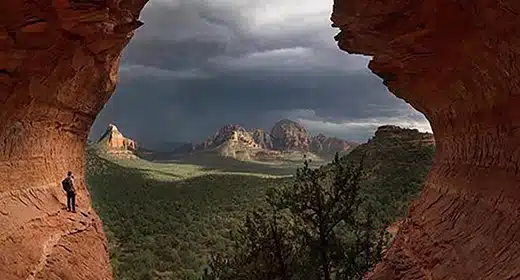by New Realities: This was my first interview. My two guests were: John C. Lilly, who was early pioneer in the field of Dolphin and Whale communication
and Kutera DecCosta, musician and Tantra teacher. She would join John to take people for dolphin swims off the cost of Hawaii.
Sex and Drugs with Whales and Dolphins
Dr John Lilly (1915-2001) began his career as an orthodox government research scientist: a biophysicist, inventor, neuroscientist and physician. He ended as a guru of the scientific counter-culture. He is principally known for his work on interspecies communication with dolphins and trying to teach them human language. This inspired the film The Day of the Dolphin, where George C. Scott modeled his character pretty much on Lily’s personality. The movie Altered States (1980) was inspired by Lilly and his experiences in the sensory isolation tank, which he invented. Some of Lily’s most known books are: Man and Dolphin (1961) and The Mind of the Dolphin (1967),The Center of the Cyclone, and The Scientist. johnclilly.com
This interview with Dr. John Lilly and Kutera Decosta was conducted on March 19th, 1997 at Lily’s home on the Hawaiian island of Maui.
Early Work
Alan Steinfeld of New Realities: John, you are pioneer in the fields of sensory deprivation and dolphin communication. What was your work like prior to this?
John Lilly: Brain electrodes, neuro-anatomy, neuro-physiology high altitude testing. I was once exposed to de-compression during World Was II, when I went from 8000 ft to 3,000 ft. In one thousandth of a second. It felt so bad, like I was hit on the back.
AS: What happens when dolphins move to different elevations?
J: They have a special circulatory mechanism in the back of the lungs which is a collection of arteries filled with artero blood. If they dive very deep and run out of oxygen this system contracts and sends freshly oxygenated blood to the brain.
Prior to your study with dolphins.
AS: How did you come up the idea for a sensory deprivation tank?
J:I wondered what would happen to my mind if I freed myself from physical stimuli?
Before this people thought if they stopped their sensory input they would go to sleep, but they don’t . They are more stimulated.
Kutera Decosta: What first sparked your interest in whales and dolphins?
J: In 1954, I invented the isolation tank and I was floating around in it and having so much fun, I wondered if there wasn’t something that floated around 24 hours a day. So Per Scholander told me to go to the Marine Studios, near St. Augustine, Florida So I went there, met the dolphin and got hooked. [Physiologist Scholander became well known for his field and experimental studies on both animals and plants, especially those living in extreme ecological conditions.]
AS: Why are people drawn to dolphins?
K: My experience is that when people get close to dolphins their energy immediately changes. They get very happy. I have seen this many times people getting transformed and healed. Dolphins usually travel together in pods, because they know how to live together n harmony. What I learned from the cetaceans is that they know how to be with each other without war, without jealousy and if we could learn more about this aspect of then the whole world would benefit.
SEX
AS: John, once you saw them floating around what was so interesting about them?
J: Their brain size is larger than ours and they have voluntary erection of their penis. There was a Tahitian trainer, at the Marine studios, who took me over to the training tank where he blew a whistle and Algae, the dolphin, turned over and erected his penis in 7 seconds.
K: I had an experience while I was swimming with a dolphin in the wild. A dolphin came up next to me and I started to touch him and stroke his belly. Suddenly he had this erection and literally wrapped his penis around my knee, as a way to hook on to me. Then he started to undulate and I was on top of him and I thought, “My god, what is happening here.” It was his way to hook on to me. It was quite an experience.
J: They will tow you around with their penis.
AS: So they don’t just use their erect penis just as a sexual tool, but for other functions as well?
J: How the hell would I know!
AS: Do whales have voluntary penile erections?
J: They all do.
AS: What have you learned about sexuality from dolphins?
K: They are certainly freer and more liberated than humans.
Seeing dolphins undulate (the rhythmic motion of the pelvis and spine back and foreword) along with conscious breathing and bringing that undulation into the spine has given me greater pleasure and greater orgasms.
As a teacher in Tantra, I show how to use breath consciously in order to bring up the energy. Dolphins are conscious breathers. They use their breath consciously. If you knock a dolphin unconscious they will drown. They need to know [when] to come up to the surface to get another breath. The same as in Tantra, if you use your breath consciously, you start to become more aware of how you are being in your body and achieve a greater orgasm.
J: We had two dolphins, Elvar and Topol, a male and a female, in Coconut Grove, Florida. One day Alice Miller, who was a my assistant, a virgin at the time, came running into my office and said, “Elvar and Topol just died.” I said, “What happened.” She said, “they just smashed around on the surface and suddenly they both went to the bottom and stayed there. I said, “Alice, you just witnessed sexual intercourse between two dolphins.”
Brains
AS: What did your research about the brain size of dolphins reveal?
J: I found Tursisops Trancatis, the Atlantic bottlenose, has a brain 40% larger than ours. But the Orca or killer whale, the largest of the dolphins is three times the size of ours.
AS: What is that extra brain matter for?
J: The larger the brain the gentler they are.
AS: What else did you find out about the brain function of dolphins?
J: We put electrodes in dolphins and found they have positive and negative re-enforcing systems. We did the same thing with monkeys, but in monkeys we found they would not stimulate the positive re–enforcement vocally, but the dolphins would do this instantly.
AS: What does that demonstrate?
J: That dolphins have voluntary control of their voice.
K: They also have separate voluntary functioning control over the left and right side of their brains.
J: We had six graduate students in Miami, who watched dolphins 24 hours a day for 6 days, in as tank. They observed that they closed one eye for a few minutes and then the other eye. So they sleep with half their brain at a time.
K: Because they are conscious breathers. There is part that is always has to be awake to breathe.
J: I devised an anesthesia machine so we can do surgery on them. They only have voluntary respiration. They can’t breathe if they are unconscious. So a respiratory mechanism was needed to keep them going.
AS: How many hours a day do they sleep?
J: Not very many, four or five
AS: Besides being larger, how do dolphin brains differ from human ones.
J: They have a special telemic nucleus. It is a circulatory nucleus that controls breathing through the neo-cortex.
AS: Is sexuality connected to brain size?
K: Many people think that when they have an orgasm it is located just around their genitals, but orgasm happens in the brain. So it’s very interesting sexually that dolphins and whales have a large brain.
Ways of Communication
AS: Can you talk about the dolphin language?
J: No. I can tell you about them trying to speak English.
Aristotle, around 400 BC said, “the voice of the dolphin in air is like the voice of the human in pronouncing vowels and combination of vowels, but he can’t pronounce consonants.” But we found that the consonants are the supersonic or ultra sonic frequencies, beyond human hearing.
K: Movement is a good communicator. You can communicate with dolphins by mimicking them under water. You have to be a good swimmer, because they get board very fast. But the more I can keep up with them like spiraling down and undulating, the more they really show an interest in checking me out.
J: There is a scene in my film, Emerging Love Between Man and Dolphin, where I was doing the dog paddle [in the dolphin pool and Sissy is circling me doing the dog paddle too.
AS: After 40 years of being and studying dolphins what questions do you still have ?
J: I still want to talk to them. That was part of problem and still is.
AS: What would you ask them?
J: The history of the planet,. They’re been around for 25 million years and probably have teaching stories that go way back like the Masi in Africa do. [Masi Merra is a nomadic tribe in Narobi,Kenya, Africa] When Richard Llewellyn stayed with the Masi, heard their stories, he went and [looked ] up a Greek historian who had gotten the teaching stories of the Masi 2000 years before and they were exactly the same. So there is an oral verbal tradition that can carry over years.
AS: Did you find there was an oral tradition or continuity of sounds of dolphins and whales coming from one generation to the next?
K: Well, I only know about the whales. About 5 years ago, Raphael and I were doing an album and we needed some whale sounds; some of their songs. I asked Roger Payne, a researcher, at the at the International Whale Commission for help. He said, “you can check it out , but I can tell you that the happiest and most beautiful whale sounds are from the 60’s and 70’s. After that they changed dramatically.” So we ended up using the whale sounds of the ’60’s.
AS: How do dolphins make their sounds?
J: There are 4 sound sources. Dolphins have lost their sense of smell, but they use their nasal cavity to blow air back and forth to make sounds..
AS: Is there a difference in sound between the two?
J: Whales have more frequencies. The Blue whale has frequencies down where the elephant ; 10 cycles per second. Human hearing stops at 20 cycles per second.
AS: Do dolphins have songs like whales.
J: Probably. They love music. In my St. Thomas research lab we had a switch for music connected to a bungee cord. And Peter, the dolphin would have to grab a ball on the end of it and swum in order to close the circuit and start the music. The first day we had it up, he swam for 8 hours listening to music.
K: After Raphael and I released our album, Angels of the Deep and played it for the first time in the ocean with underwater speakers, we were surrounded by whales coming to check us out.
AS: Do you feel love from the dolphins when you swim with them?
K: I feel love and I also feel they zap me.
J: Yes, right.
AS: What do you mean zap you?
K: Well when they send out their sonar, you can feel that on your spine, like prickling energy. I can’t explain it more scientifically. The feeling is great.
AS: Do you feel better or worse afterwards?
K: I have never felt bad after swimming with dolphins. I always feel up lifted, my spirit soars and I fee l very grateful for having had the experience.
J: A friend of mine, Beale Allen, swam with sperm whales in the Indian Ocean and she got zapped and she felt totally changed, you don’t even know her now.
AS: So they send sound frequencies through your body?
K: When John and I take people out on a Whale adventure you go into the water and you not only hear the sounds of the whales and dolphins you literally feel it. Because the sound penetrates your body. It is like being in a sound chamber. It is a very unique experience.
AS: I remember one time I was out with John in a boat and a group o f us were in the water swimming around, when we saw 6 whales approaching us about a mile away. Then suddenly they were right in front of us, very close. They interacted and swam with us for about a half of hour to an hour. And it seemed to me, well, we call it whale watching, but time it was human watching. They came with their youngsters, as if to say “that’s how humans look.”
It is a great experience to swim and look into the eye of a whale. It is very big and in there you look into eternity. There you look into ancient, ancient knowledge. In that moment everything stops and you connect with the eyes of the soul or the eyes of God.
Perception
AS: What is the reality they live in?
J: I don’t know, but I am sure they have holographic acoustic images as well as visual.
AS: So they talk to each other in sound created images as well as a language?
K When John and I take people out for a dolphin/whale adventure we get the whole group together to meditate and come up with one symbol. Then when we go out in the ocean and dive down we focus on that one symbol and send it out like an image to the dolphins and whales. Because I believe one way to communicate with them is telepathically.
J: Right, in visual images, There was a trainer in New Zealand who use to swim besides dolphins and [he would just] visualize what he wanted them to do and they would do it.
LSD and Dolphins
AS: Do you think it is ever really going to be possible to communicate with whales and dolphins.
J: Oh yes. I was taking LSD for years when it was still legally to do so. Then I got a letter from Sandoz saying I was to return what I had left. So before I sent back 150 milligrams of what I had left, I took a sailing trip in the British Virgin islands. The captain on board suddenly said, “whale” and so we went along side these fin back. She was 60feet long and our boat was only 40 feet. She had a baby with her and she turned and fixed me with her eye and so much information passed it was incredible.
AS: What kind of information?
J: Beyond words.
AS: How else does your work with dolphins relate to your experiences with hallucinogenic drugs?
J: You mean psychedelic chemicals.
AS: Yes, psychedelic chemicals.
J: In one of my books it says ECCO, the Earth Coincident Control Office, said two things to me. One, we should try to communicate with dolphins and two, they gave us LSD.
AS: What did they give us LSD for?
J: To increase our consciousness of the universe.
All my LSD [research] work, was in St. Thomas, in an isolation tank above the dolphin pool and had some far out experiences there. Then in California, at the Marineland,{ Africa-USA}. I had an isolation and beside the dolphin pool and I took Ketamine and they took me in to the dolphin group mind. I said, “hey, wait a minute, I can’t even experience one dolphin much less the group mind.” So they went back to one.
AS: What did you experience.
J: I can’t say, its beyond words.
AS: Did you ever give dolphins LSD ?
J: Oh yes. Six of them. They all had wonderful trips.
AS: How do you know that?
J: Well, they would swim along the surface, then they suddenly turn their beaks down and turn on their sonar. Then I remembered my first trip on LSD, the floor disappeared and bang I fell to the floor because I saw stars through the earth. So what they were doing with their sonar it seems [to me] was like they were apparently seeing right through the earth the way I did.
AS: Any thing else happened?
J: Well Pam, the dolphin, had been traumatized, because she was spear gunned three times in a Flipper movies. She was given to us by Ivan Tors and she always stayed away from humans. When we gave her LSD , she climbed all over us. So LSD is effective.
Protection
Q: What would you like to do for the cetaceans on the planet?
J: Get them a representative at the United Nations. Patricia Forcanna, of the Humane Society of America has volunteered to be the first representative. 71% of the planet water belongs to the Cetacean Nation. Maui is in the middle of the Pacific Ocean which is 50% , so the secretariat should be here.
AS: Has this been proposed to the UN?
J: No, but Michael Bennet has written it up. It is on my home page: http://www.garage.co.jp/lilly
AS: Do you know what is happening with the whale protection policies among the countries of the world.
J: The last conference of the International Whale Commission met in Puerto Veratta, Mexico where a whale sanctuary was established around the Antarctica continent. The year before they established a sanctuary for the Sperm whale in the Indian Ocean.
AS: But whales are still being hunted else where?
K: Yes, because whale meat in Japan is considered a delicacy. It brings in lots of money.
AS: And what is happening the drift netting threat to dolphins?
K: There has been a stop to all drift netting, because it not only hurts dolphins, but other ocean life as well. But we really don’t know [ if it has really stopped]. the oceans are so vast is hard to cover even a piece of it. But there are some guardians of the ocean trying to protect the rights of whales and dolphins, like the Sea Shepherd and other organizations. But the oceans are the most unknown territory to humans , yet that is where the food chain starts, If the whales and dolphins don’t survive , I believe we will not survive either. So its best to take care now and be aware of the environment.
J: Then Sperm whale eats the Giant squid and they have to dive thousands of fathoms to get them. Sometimes their lower jaw gets caught in cables when they are sweeping the bottom of the ocean. They have found skeletons of Sperm whales tied up in these cables.
History
AS: Do we have evidence of the species that pre-date the cetaceans return to the ocean
J: They didn’t return. [They evolved in the sea]. Pectiosoris were 4 paddle reptiles that lived in the seas. They evolved into the proto-dolphin and their blow hole were nostrils that gradually evolved to the top of the head in later generations.
AS: Oh, so there were two lines of mammalian evolution. One that became land animals and another that became sea animals.
J: Right. Every so often you find dolphins that have lumps where the hind flippers were. Some young ones have them too.
AS: I’ve always thought man and dolphin had a common mammalian origin, but you are saying you have to go back to a common reptilian origin.
J: You have to go beyond that to the DNA and the ocean.
AS: So do dolphins breast feed?
J: Yes [and ] the mother [must propel the new born to the surface for its first breath.
Conclusion
AS: What do you feel have been some of your greatest discoveries about dolphins?
J: They are compassionate. They like us, [humans]. They like being with us. They get sexually excited in our presence. And they [have] never hurt anybody.
AS: There are a lot of stories about saving people from drowning.
J: A friend of mine was swimming at a beach on a little island off the coast of Georgia, and this dolphin came along and pushed him back to shore three times, So he went up the beach to talk to a local fisherman and he said, ” well, we have hammerhead sharks out there.”
AS: There does seem to be a long history of dolphins helping out humans.
J: Aristotle told a story of a boy and dolphin making friends and when the boy drowned, the dolphin committed suicide.
In Coconut Grove we had 8 dolphins in captivity. One day I just decided to let them all go and 5 of them committed suicide the next day, by not breathing. So we quickly had to let the last 3 go before they could commit suicide. One was an old bottle nose and there ware two young ones, We knew the old one would take care of the young ones. When we let them go in a lap basin, the young ones kept jumping up and the old one kept keeping down, Finally, he took them out to sea.
AS: So they didn’t want to leave their captivity.
J: That’s right. We went out in Biscayne Bay and put a long net around 30 dolphins. Just before we closed the net all of them left except 6.
AS: So they were your volunteers! But Kutera, what do you have to say about the captivity of dolphins?
K: Most of my time with dolphins has been spent swimming with the wild ones rather than captive dolphins. But maybe we need them to teach people that these are mammals, not fish and to teach our children that these are highly intelligent beings.
AS: [What can you tell me about being with these creatures in the wild]
K: For me its always a great privilege to swim with dolphins and whales. The first time I got interested in dolphins was many years ago I was on a sailing boat. And we saw two bottle nose dolphins coming towards us, I was so excited. And I just wanted to be with them that I didn’t care at all and jumped over board, but because it was a sailing boat it kept going. As soon as I was in the water I realized what a stupid thing I did, but these two dolphins came up and circles me the whole time It was a wonderful experience. As soon as the boat sighted me and turned around to pick me up, they left.
K: What whales and dolphins have brought into my life and the life of my husband, Raphael, is great music, Most of our music contains songs of whales and dolphins, especially our last one, “The Calling.” John also narrates on that album. It is dedicated to The Cetacean Nation and it speaks about the great minds in the waters.
K: There is something else I think people should know. Dolphins have a great healing capacity. There have been studies done with autistic children in Florida at a dolphin research center. It seems they are having great improvement due to their interaction with dolphins.
J: When Per Scholander brought autistic children to a tank I had of dolphins in Coconut Grove. He said it made his children come out of their autism as soon as they got near the dolphins.
AS: Permanently?
J: [No].Just when they were around the dolphins.
K: Another researcher in England, Horis Dobbs studied dolphins and people with very deep depression. He found out that if people, who have never seen a dolphin or had contact with a dolphin, but did a meditation with the sounds of the dolphins it helped lift depression faster than any medication.
AS: In closing what do you want to tell people the most about cetaceans?
J: Get acquainted. Swim with them. Work with them and have fun with them. The more young people that get acquainted with them, will be how we will solve the communication problem.




















































